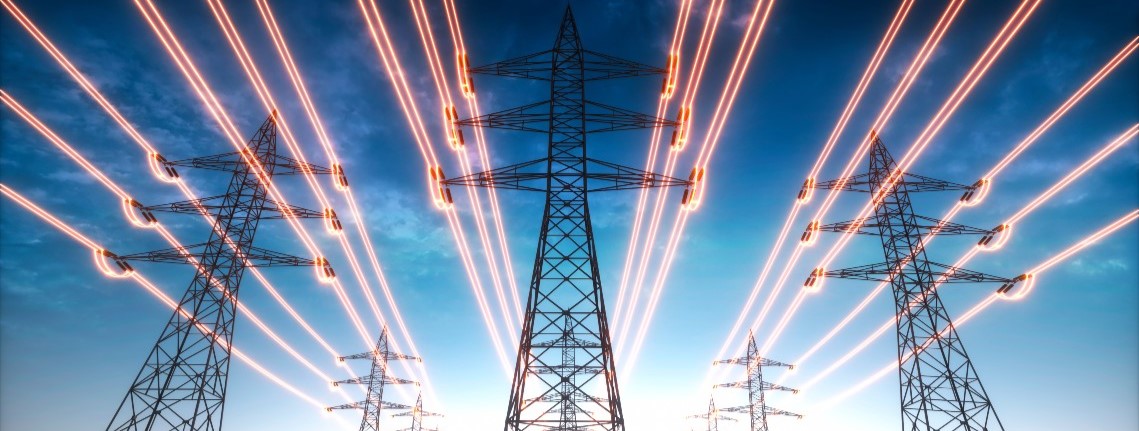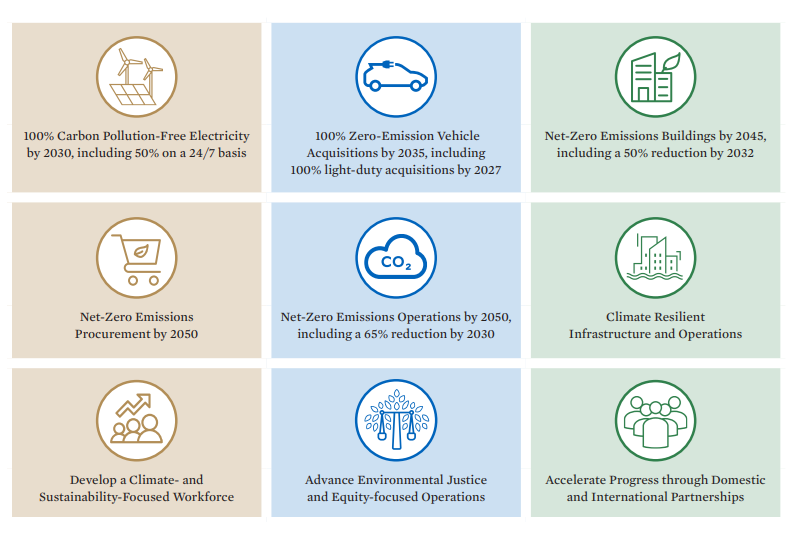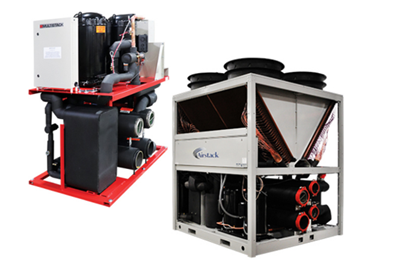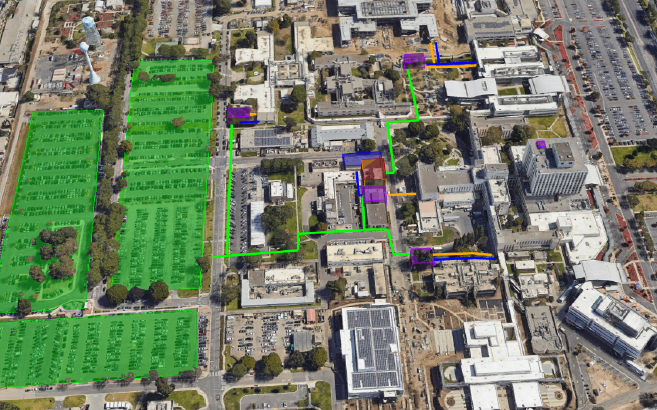1. Introduction to Electrification and Its Future Impact
What is electrification and how will it affect our lives in the future? Electrification, simply put, is the process of replacing technologies that use fossil fuels (coal, oil, and natural gas) with technologies that use electricity as a source of energy.
Electrification is one aspect of the nation’s larger decarbonization goals. Decarbonization refers to any action that reduces CO2 in our atmosphere. Electrification of building, facility, and transportation sectors speed up the process, thereby curbing the impacts of climate change. This is especially true when the electricity is generated by renewable sources, like sun and wind.
2. President Biden’s Order 14057 and Clean Energy
The current administration has set very aggressive decarbonization goals. Executive Order 14057 states, “As the single largest landowner, energy consumer and employer in the nation, the federal government can catalyze private-sector investment and expand the economy and American industry by transforming how we build, buy and manage electricity, vehicles, buildings and other operations to be clean and sustainable…”
Executive Order 14057 aims to catalyze American clean energy industries and jobs through The Federal Sustainability Plan. The plan is set to deliver an ambitious emissions reduction pathway consistent with the U.S. goal to decrease greenhouse gas emission by 50–52% from 2005 levels by 2030. It also aims to limit global warming to 1.5 degrees Celsius.
Through the Federal Sustainability Plan, the federal government plans to achieve the following:
Electrification is one of the most impactful strategies for reducing CO2 emissions and reaching the “Net Zero Emissions by 2050” goal. The majority of emissions reductions from electrification come from the shift towards the installation of heat pumps and electric transport. Scout is supporting agencies as they look to successfully navigate the decarbonization landscape.
3. Veterans Affairs Goals for Decarbonization and the Heat Pump Solution
The U.S. Department of Veterans Affairs (VA) is one of the largest federal agencies and operates critical care facilities in campus settings across the U.S. As such, they are subject to meeting the goals of Executive Order 14057.
There are several ways to achieve decarbonization. For example, adding electric heat pump systems for buildings and campus settings is an efficient way to advance decarbonization. This can be done on a unitary basis by replacing electric/natural gas packaged air conditioning units or on a more campus-wide heat pump “system” (Figure 1) installation approach.
Figure 1: Electric Heat Pump System
Large campuses, such as operated by the VA and other federal agencies, tend to be heavy fossil fuel consumers utilizing district heating and cooling plants. These facilities typically have a large carbon footprint. To meet the future decarbonization goals, employing efficient heat pump technology can be an answer. This approach would require the replacement of established fossil fuel-based steam or hot water centralized distribution systems with decentralized heat pump systems. A successful conversion would eliminate virtually all carbon-based fuels for the heating and cooling systems.
The very nature of the conversion requires a strategic, well planned phased construction. Elements of a new decentralized heat pump system could consist of:
- Installing cluster heat pump plants across a campus setting
- Adding heat recovery equipment
- Installing and utilizing back up condensing boilers
- Installing geothermal wells
4. Example Electrification Approach
The following figure is a conceptual approach for a federal facility.
Figure 2: Electrification Conceptual Approach
In the graphic above, potential future heat pump plants are shown in purple and geothermal well fields are shown in green. Additionally, a general conceptual layout of the new network of interconnecting heating and cooling piping is shown, which would replace the aging existing steam pipe distribution system. This new piping network connects the electric heat pumps, existing campus chillers, and the available geothermal energy coupling together, all these energy sources create a superior overall plant efficiency.
5. Conclusion
The current global climate crisis will most definitely push engineering innovation and resourcefulness. It will require the adoption of new technologies and designs that will incorporate approaches such as electrification. Scout is uniquely positioned to provide the needed energy engineering, environmental planning, and agency interfaces to get the job done and reach the desired decarbonization goals. A safer, cleaner, and more efficient building environment is right around the corner, and Scout and its team members are looking forward to being a part of helping make that transition a reality.
My colleagues and I at Scout can be counted on to provide high-quality electrification services! If you have questions or need any support, contact us today at: hello@scoutenv.com.
















